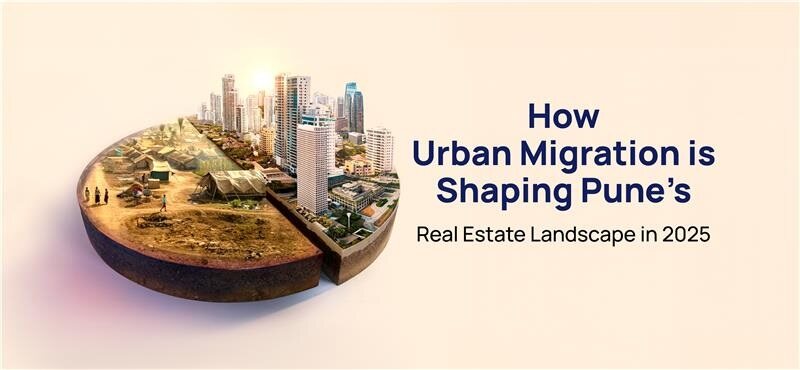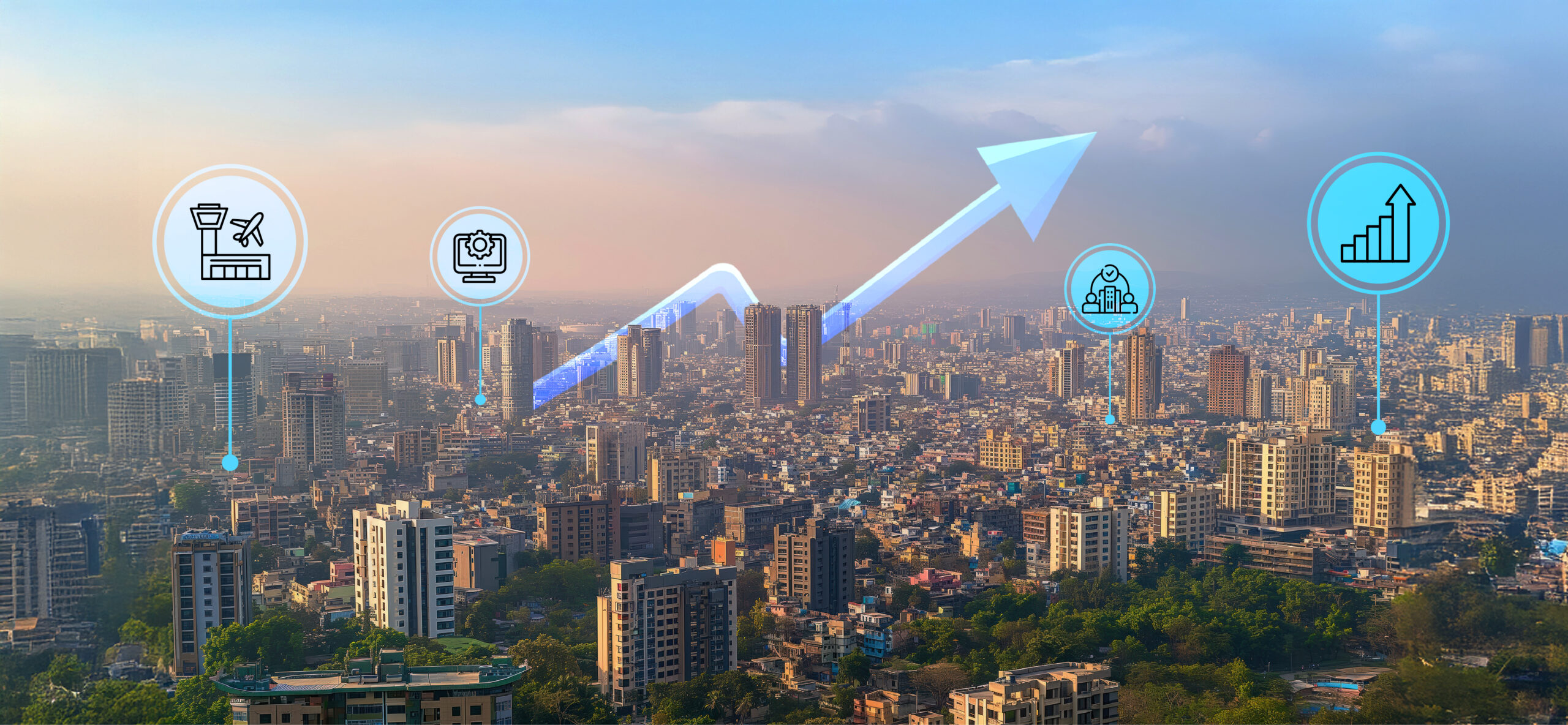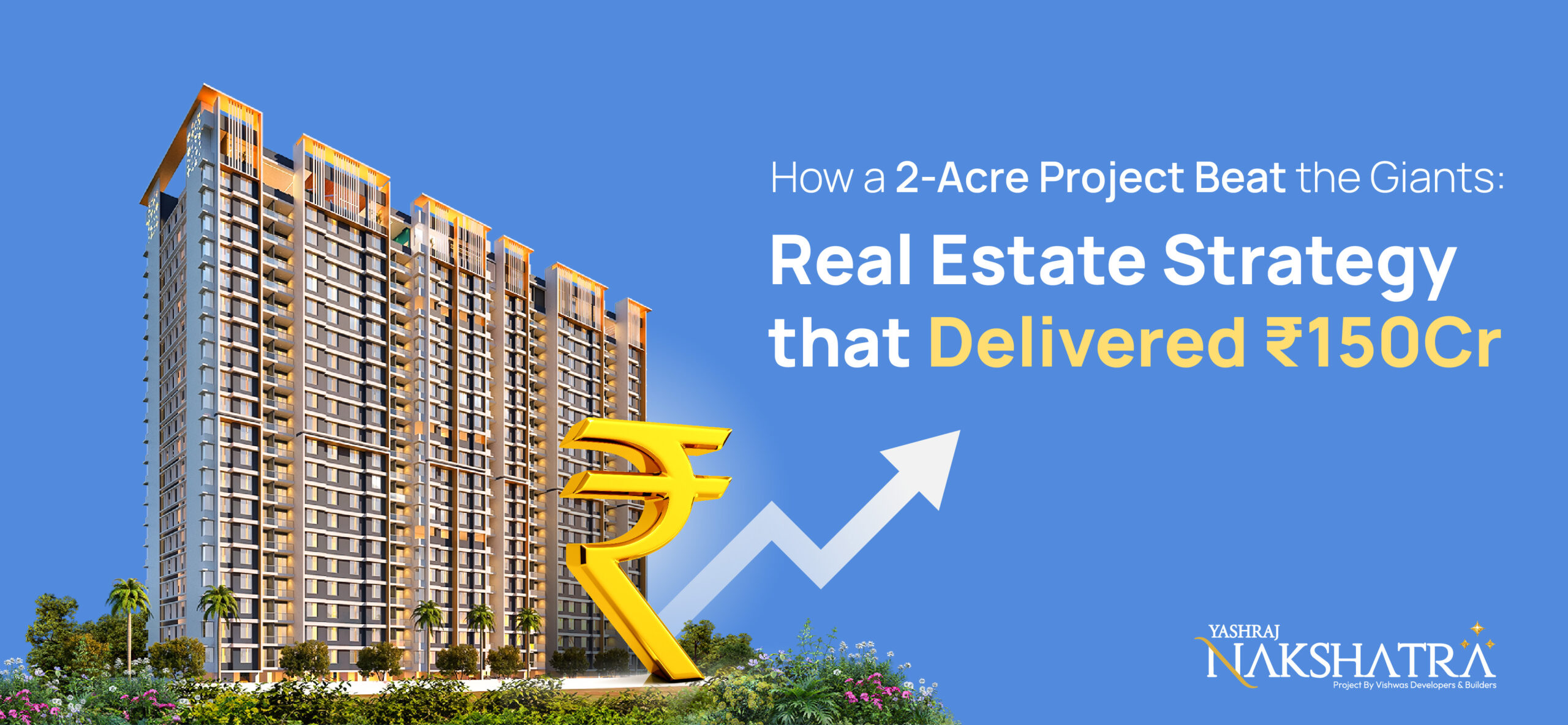Pune’s real estate market is poised for a landmark year in 2025. With over 42,000 housing units sold in the previous year and a robust infrastructure pipeline underway, the city is evolving into a smarter, greener, and more investable market. This blog explores Pune’s economic momentum, emerging infrastructure, evolving buyer preferences, and why investors are increasingly drawn to this thriving metropolis.
Pune Economic Growth & Demographic Momentum Driving Real Estate Demand
Infrastructure improvements are reshaping Pune’s property market and enhancing connectivity, accessibility, and livability. Large-scale connectivity projects and improved public infrastructure directly translate into real estate value appreciation. Locations along metro lines and highways are seeing an uptick in residential demand and price growth. These developments are key growth drivers for residential and commercial real estate:
- Strong job creation in IT/ITeS, startups, and manufacturing hubs.
- A steady influx of young professionals and families looking for quality housing.
Infrastructure Developments Building Real Value in Pune Real Estate
Infrastructure improvements are reshaping Pune’s property market and enhancing connectivity, accessibility, and livability. Large-scale connectivity projects and improved public infrastructure directly translate into real estate value appreciation. Locations along metro lines and highways are seeing an uptick in residential demand and price growth.
- Pune Metro: The ongoing phase-wise expansion, especially corridors like Vanaz–Ramwadi and Hinjewadi–Shivajinagar, significantly boost connectivity and real estate demand.
- Purandar Airport: Expected to act as a growth catalyst for the Pune South regions, including Hadapsar, NIBM, and Undri.
- Ring Road & Road Widening Projects: Improved Road networks seamlessly link suburbs with commercial hubs, reducing commute times and increasing property appeal.
- AIIMS Aundh: Enhances healthcare infrastructure, boosting investor confidence in North Pune.
Rising Consumer Demand for Spacious & Smart Living in Pune Homes
The Pune housing market is shifting toward bigger and brighter living spaces. Buyers prioritise comfort, technology, and lifestyle amenities as their top criteria. Today’s urban buyer isn’t just looking for a house—they want an integrated living experience. From layout design to wellness features, the demand is for homes that reflect modern aspirations and convenience. Here’s what’s driving the change:
- Demand is moving from compact 1 BHKs to larger 2, 3, and 4 BHK apartments, with buyers preferring homes above 800 sq. ft. for enhanced comfort. Over 85% of new launches feature smart home technologies such as automation and energy-efficient zoning.
- Rooftop amenities, open terraces, wellness zones, and green spaces are increasingly integral to project designs.
Policy Push: Real Estate Reforms Boost Transparency & Sustainability
Government reforms are vital in enhancing transparency, buyer confidence, and sustainability across Pune’s real estate sector. These regulatory initiatives are streamlining approvals, improving accountability, and enabling faster project deliveries—all critical for market stability and trust. Recent policy initiatives include:
- RERA-QR Code Compliance ensures higher buyer confidence and combats project malpractice.
- The Budget 2025 introduces tax breaks and fast-track approvals for green-certified projects, incentivizing eco-friendly development.
- Focusing on stalled project revival through relaxed norms and funding support is unlocking stuck inventory and offering buyers more choices.
Sustainability in Pune Real Estate: From Trend to Industry Standard
Sustainability has become a core focus for Pune’s real estate developers and buyers alike, reflecting a shift toward responsible and future-ready housing with rising climate awareness and energy costs, and eco-conscious features are central to homebuying decisions. Sustainability is no longer optional; it’s a must-have. Here’s what we’re seeing:
- Over 60% of luxury projects incorporate green building norms, solar energy installations, and rainwater harvesting systems.
- Buyers are increasingly favoring eco-friendly homes and wellness homes that promote healthier living.
- Developers are integrating Environmental, Social, and Governance (ESG) principles into design and execution to future-proof investments.
The Co-Living & Rental Boom: Changing Urban Preferences in Pune
As rental demand surges, co-living has become a preferred lifestyle solution for a mobile, millennial population. These spaces offer flexibility, affordability, and community-driven living, all critical for students and young professionals. Institutional players are entering the co-living segment with scalable models backed by tech integration and professional property management. This segment has long-term rental yield potential for developers and investors alike. Key factors shaping this trend include:
- High demand from students and the IT workforce in micro-markets like Hinjewadi, Viman Nagar, and Kharadi.
- Attractive rental yields of 5-6% drive strong institutional interest.
- Asset-light business models for co-living spaces are increasing affordability and flexibility.
Bigger, Smarter, Better: The Rise of Spacious & Tech-Enabled Homes in Pune
Following the implementation of RERA, branded developers have become dominant players in Pune’s real estate market. This has led to improved quality standards and technology adoption across the buyer journey. Tech is redefining real estate, from discovery to handover. Virtual walkthroughs, CRM-integrated platforms, and smart home features are now central to the experience. What’s driving this evolution?
- Greater buyer confidence through assured delivery and project quality.
- Increasing adoption of tech-enabled homebuying journeys, such as virtual site visits and integrated CRM platforms.
- New launches prioritize smart homes, solar homes, and advanced amenities, aligning with modern lifestyles.
Emerging Pune Micro-Markets: Growth Hotspots for Buyers and Investors
The Pune real estate landscape is highly localized, with certain micro-markets showing exceptional potential due to connectivity, lifestyle infrastructure, and commercial growth. Buyers and investors alike are shifting focus to these areas, seeking value appreciation, better amenities, and improved commute efficiency. Here are key micro-markets gaining traction:
| Micro-Market | Key Drivers | Buyer Segment |
|---|---|---|
| Wakad & Hinjewadi | IT hubs, Metro access, co-living demand | Professionals, investors |
| NIBM & Undri | Wellness living, schools nearby | Families, NRIs |
| Kharadi & Viman Nagar | Premium rentals, office hubs | NRIs, HNIs | Bibwewadi | Low-density, peaceful pockets | End-users, upgraders |
Why Investors Are Betting Big on Pune Real Estate in 2025
Pune has evolved into a well-rounded investment destination with a balanced mix of affordability, infrastructure, and growth potential. Investors are increasingly viewing Pune as a long-term wealth creation hub.
Key reasons why:
- Affordable Pricing: Pune offers competitive pricing compared to Mumbai and Bangalore, with a superior quality of life (Knight Frank India).
- Capital Growth: Strategic locations with upcoming infrastructure offer strong capital appreciation potential.
- Immediate Inventory: High absorption rates in ready-to-move and near-possession inventory present immediate buying opportunities.
- Job Opportunities: The city’s thriving IT sector and startup ecosystem continue to attract talent and fuel housing demand.
- Rental Yields: Pune’s robust rental market provides steady yields, making it attractive for rental investors and NRIs.
- Regulatory Confidence: Regulatory clarity and improved governance under RERA further boost investor confidence.
- Diverse Markets: Emerging micro-markets provide diversified options catering to various budget segments, ensuring healthy returns.
Pune Real Estate Is Ready for the Future: Opportunities Await
With regulatory reforms, milestone infrastructure projects, evolving buyer preferences, and rising investor confidence, Pune’s real estate market is growing smarter, more transparent, and more sustainable than ever.
Whether you’re a first-time buyer, seasoned investor, or developer, 2025 is the perfect time to explore Pune’s dynamic housing opportunities.
Why Choose BeyondWalls for Your Pune Property Journey?
BeyondWalls stands out as a premier real estate marketing and technology platform that empowers buyers and developers alike. Explore Pune’s best real estate opportunities and step confidently into your future home or investment.
- Comprehensive Listings
- Data-Driven Insights
- Advanced Tech
- Trusted Network
- Customer-Centric Approach
Visit BeyondWalls Pune Projects to get started today.




